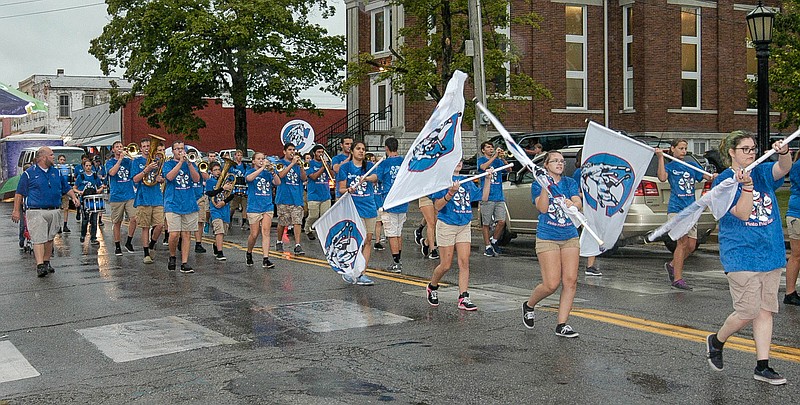In the midst of the 151st Moniteau County Fair of 2017, it can be interesting to look back and see how much the event has changed since the 31st fair of 1897.
First off, the 1897 fair was a four-day event, which ran from Tuesday, Sept. 21, through Friday, Sept. 24. This year, the six-day fair runs Monday, Aug. 7, through Saturday, Aug. 12. The fair could be considered longer, since a few fair-related activities were held Aug. 5-6.
The 2017 daily general admission is $8 Monday, Wednesday and Saturday, $5 Thursday, $10 Friday, and free on Tuesday. Children under 12 are free.
It was more complicated in 1897. The charges were: footmen 25 cents; horsemen 35 cents; all one-horse vehicles 25 cents; all two-horse vehicles 30 cents; each person in a vehicle 25 cents; public hacks, two horse-per-day $1; and public hacks, four horse-per-day $1.50. Oh yes, children under 12 were 10 cents-per-day.
The current fair book has an art hall category called "household arts," including two classes for "any type of homemade clothing." Roughly equivalent 120 years ago was a category called "articles of wool, cotton, flax, etc. (all to be handmade)" and a separate category called "ladies' fancy work," with nearly 80 separate classes.
In 1897, prizes were given for the best handmade wool hose, wool socks, wool yarn, hearth rug, carriage afghan, lambrequin and (probably a misspelling) ladies sun bondet. In 2017, of those classes, only the afghan is still listed, although not a "carriage" afghan.
A comparison of the different garden products to be entered in the art hall competition shows several differences. In 1897, there were nearly 40 classes of fresh fruit and vegetables, including "mangel wurtzel" and "rutabagas." This year, the total number classes is not much different, but there is a category for "ugly vegetables" and another for "monster vegetable."
In 2017, many events feature motorized vehicles, such as a car show, tractor-pulling contests, ATV, demolition derby, figure 8 and tuff truck, to name a few.
Horses, on the other hand, show up only in the horse show, trail challenge and draft horse pull.
In 1897, horses were an every-day thing. Some category of horses were judged every day except Wednesday. That day was reserved for cattle judging. Bicycle races were also very important, with categories for one-half mile, one mile, two miles and three miles.
A section for agricultural implements 120 years ago had a competition for the best of two-horse wagons, painted and unpainted; two-horse plow, double-shovel plow; walking cultivator; hay rake; harrow; and, strangely for the modern reader, display of crockery ware.
Saddle makers also competed for prizes for the best saddles, bridles, harness and horse collars.
A quick comparison of the advertisers shows some things have not changed in 120 years. Advertisements in both books include law offices, medical services, restaurants, insurance, construction, groceries, pharmacies, barbers and hair dressers. Of course, both include stump removal services.
The 2017 fair book advertising not found in the 1897 edition includes ads for heating and air conditioning, auto related items (sales, repair, tires, truck bodies and fuel), tractors and farm equipment, veterinary services and well drilling.
One interesting note is that an advertisement in the 2017 fair book promotes the coming season of performances at The Finke Theatre. In 1897, the Finke Opera House had nightly performances "secured for Fair Week," advertised as "six nights of the best comedy companies on the road."
Ads in 1897, promote blacksmith work, wagons, saddles, harness and whips, marble and stone cutting, dress makers and hat makers, furniture, flour mills, stoneware and drain tile. Cigars were featured prominently, sometimes sold in specialty stores and sometimes in saloons. It appears there were many saloons.
Although the fair has changed, much of it has been due to increased mobility of society. In 2017, with a population having a lot of cars and trucks, people often drive to the fair for the day. They may attend events for several days.
In 1897, people traveled by foot, horse, wagon or cart, and hack (sort of a horse-drawn taxi.) They often attended only one day. Those that did attend more than one day were interested in the hotel advertisements.
Given the changes over the last 120 years, it can only be wondered how much difference fairgoers in 2137 will find when comparing that fair book to the 2017 fair book. Possibly they will check out the 271st Moniteau County Fair on whatever may be the electronic device of the time and wonder that the 151st fair book was printed on paper.

